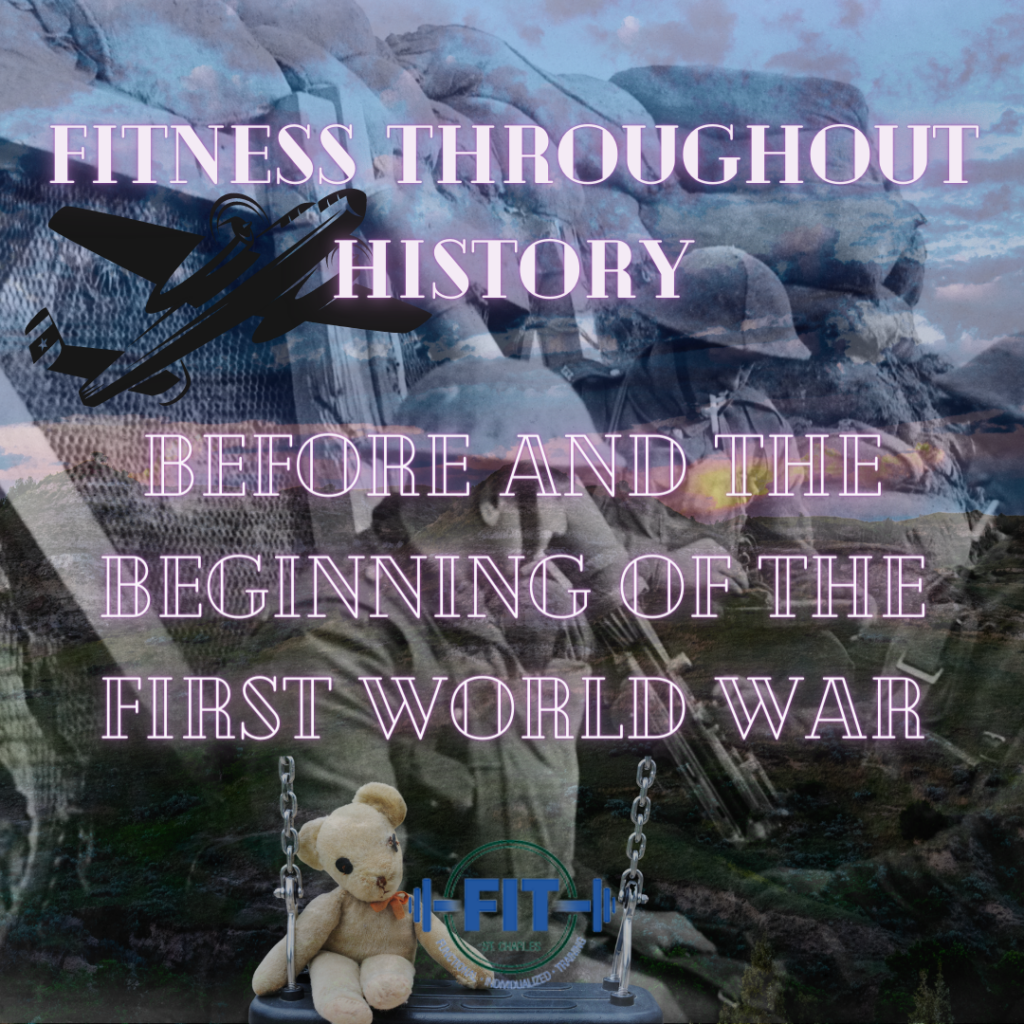
Welcome back to the History of Fitness! Today we will discuss the interest in fitness in the United States at the turn of the 20th Century through the World War One era!
As the United States entered the 20th Century, there was a renewed interest in the overall health and fitness of its citizens. For the first time, this was spearheaded and endorsed by the President of the United States at the time- Theodore Roosevelt. Previously, as we’ve discussed in the past few weeks, there were a number of academics that understood the importance of the addition of a physical education program in public schools, but it wasn’t until Roosevelt took office that this was addressed on a national level by a leader of the United States
Roosesvelt didn’t start life as a fitness hero; in fact, he had a lot to overcome. He battled with asthma as a child, and instead of letting this get the best of him, it just strengthened his resolve. Theodore Roosevelt, who is considered one of the fittest Presidents in US history, regularly took part in a variety of physical activities in young adulthood and throughout his lifetime, including wrestling, boxing, tennis, running, and weight training. It is safe to say that this man was TOUGH. For instance, when he was Governor of New York, before his presidency, he discovered that a middleweight champion of wrestling was residing nearby. He instantly reached out and hired him to train him- he was in his 40’s at the time, well above the average age of wrestlers at the time, and half the age of the man he hired to train him. And this is just one example.
Theodore Roosevelt’s Presidency ushered in a new era in fitness, a similar ideology to ancient Greece. Henceforth, there were structured fitness classes as a part of the public school system nationwide, which marked an important milestone in how the United States viewed the importance of fitness as a whole.
Shortly after a renewed interest in fitness began in the United States, the gaze of the American public shifted- there were more important things to worry about. World War One had begun, and the United States became involved. Hundreds of thousands of military personnel were drafted and trained for combat. This gave us some insight on the overall fitness level of adult Americans (certainly an unexpected outcome of the war). After the war was over, statistics were released about fitness levels of those drafted in the war. One out of three people drafted were unfit for combat, and many that were “fit for combat” were on the lower end of the fitness spectrum.
Government legislation was passed in response to this data that ordered improvements in the physical education system in the United States in the public school system. However, as we will discuss next week, this was a short lived concern as interest waned in these programs as the US entered the Great Depression and the Roaring Twenties.
